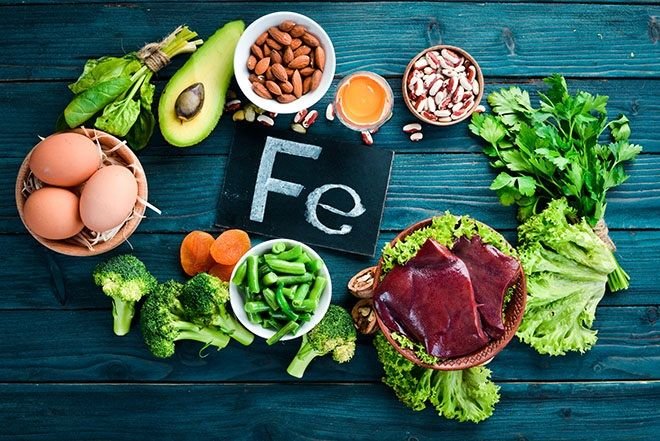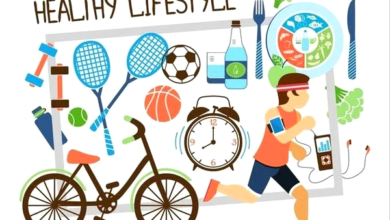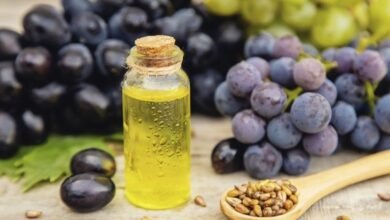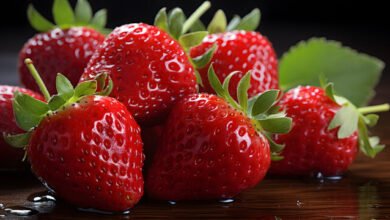8 Best Types Of Food That Can Help You Fight Anaemia!

Anaemia happens when the body lacks enough healthy red blood cells. As a result, the blood becomes incapable of carrying an adequate amount of oxygen. Anaemia can be temporary or long term and can range from mild to severe.
P
Table of Contents
- Do you Feel Fatigued All the Time?
- Foods for Anaemia
- Foods to Avoid if You Are Anaemic
- How Can You Get More Iron From Your Diet?
- How Does Your Body use Iron From Iron-Rich Foods?
- When to Seek Help
- This might be related & helpful!
Do you Feel Fatigued All the Time?
Fatigue is one of the most defining symptoms of anaemia. If anaemia is caused due to a chronic disease, it can mask the signs of anaemia making it challenging to detect. Depending on the cause of anaemia, there might or might not be symptoms. If there are, they will be:
- Weakness
- Irregular heartbeats
- Dizziness or lightheadedness
- Cold hands and feet
- Pale or yellowish skin
- Shortness of breath
- Chest pain
- Headaches
A diet plan with iron-rich foods can help control if not cure anaemia completely. Without enough iron, our body cannot make enough haemoglobin. That becomes a big problem because haemoglobin is the substance in red blood cells that carries oxygen from the heart to the body tissues. About 50% of pregnant women, 20% of women, and 3% of men lack enough iron in their bodies.
Do You Know
- Anaemia can cause symptoms such as fatigue, dizziness, and shortness of breath. source: WHO
- Iron deficiency can make you feel tired, give you headaches, and make it difficult to concentrate. source: healthdirect
- Iron deficiency is considered the most common nutritional deficiency leading to anaemia. source: WHO
- Pregnant women should have an iron intake of 27mg/day. source: healthdirect
- Iron-fortified bread and breakfast cereals are good sources of non-haem iron. source: Healthdirect Australia
- Vitamin C-rich foods can help improve iron absorption. source: Healthdirect Australia
Foods for Anaemia
Most anaemic patients are advised to take 150 to 200 milligrams of iron every day. Make sure to have these foods to fight anaemia:
1) Fruits and Vegetables
- Curly kale and other varieties
- Collard greens
- Pomegranates
- Swiss chard
- Red and yellow peppers
- Watercress
- Spinach
- Dandelion greens
- Oranges
- Strawberries
- Lemon
- Key lime
- Sweet potatoes
- Beet greens
Dark leafy greens like spinach are a great source of non-heme iron. Vitamin C from citrus fruits helps the stomach to absorb iron. Swiss chard and Collard greens are good sources of both Vitamin C and iron.
Read more: https://www.healthevoke.com/8-proven-health-benefits-of-strawberries/
2) Nuts and Seeds
Nuts and seeds are some of the most nutrient-dense foods. One ounce of pistachios can provide 6.1% of the required daily value of iron in a person.
3) Meat and Fish
- Lamb
- Liver
- Oysters
- Salmon
- Perch
- Beef
- Venison
- Shellfish
- Shrimp
- Tuna
- Halibut
- Haddock
- Chicken
Meat and fish have heme iron. Lean cut white meat like chicken is a great source of heme protein. Three ounces of grilled chicken with sides of broccoli, sauteed spinach, and tomatoes can make for a great iron-rich meal for people suffering from anaemia.
Eggs are known for their proteins, but they also pack a high level of iron. Eggs can be had paired with whole-grain toast, lightly roasted tomatoes, and quinoa for breakfast that will provide a great start to the day.
5) Beans and Pulses
- Chickpeas
- Black-eyed peas
- Black beans
- Lima beans
- Kidney beans
- Soybeans
Lentils are supposed to be a superfood for anaemic patients. Half a cup of lentils has about 3.3 milligrams of iron, which is around 20% of what your body needs throughout the day. Beans and pulses work for both vegetarians and meat-eaters and provide a good amount of iron.
6) Blackstrap Molasses
Blackstrap molasses are loaded with iron. They are a total nutritional powerhouse because of calcium, Vitamin B6, selenium, and magnesium. They are perfect for anaemic patients because apart from providing the iron they desperately need, blackstrap molasses also keep them healthy due to the presence of other integral nutrients.
7) Grains
Iron-fortified pasta, cereals, and grains are good options for getting the much-needed iron. However, there are natural options too. They are all rich in iron and can help in shooting up the haemoglobin level in blood.
- Quinoa
- Oats
- Whole wheat
- Kamut
- Teff
8) Fortified Food
There are different types of food that are fortified with iron. You can add these to your diet if you are a vegetarian or cannot keep down other sources of iron.
- Fortified, ready-to-eat cereals
- Fortified pasta
- Fortified white rice
- Fortified orange juice
- Foods made from fortified white flour, like bread
- Foods made from fortified cornmeal
Foods to Avoid if You Are Anaemic
Some types of food interfere with the absorption of iron. As a result, having all that iron-rich food sometimes might prove to be redundant if had with these foods:
- Yoghurt
- Raw milk
- Cheese
- Sardines
- Broccoli
- Tofu
- Tea and coffee
- Food containing tannins like corn, grapes, sorghum
How Can You Get More Iron From Your Diet?
- Have food rich in iron
- Include food in your diet that will help you absorb the iron
- Cook food in a cast-iron skillet
- Cook food for shorter periods
- Refrain from drinking tea or coffee with meals
- Consult with your doctor and choose supplements containing ferrous salts
How Does Your Body use Iron From Iron-Rich Foods?
The iron from iron-rich foods is absorbed through the upper part of the small intestine. Dietary iron is of two types: heme iron and non-heme iron. Heme iron is derived from haemoglobin. Our body absorbs iron mostly from heme sources. Heme iron can be found in fish, red meats, and poultry. Non-heme iron is mainly found in plant sources. Meat, seafood, and chicken, however, contain a little bit of both.
Following dosage instructions is essential because an excess of iron can cause iron toxicity. Consult with your doctor, go to a dietician if required and get yourself a proper diet chart. No one food can cure anaemia, but the right diet can help a lot. Follow it well, and anaemia shouldn’t pose to be a problem anymore.
When to Seek Help
While these anemia treatment foods are a great way to support your iron intake, relying solely on food can prove dangerous if you have serious issues. Here are a few situations that you need to watch for. These require immediate medical attention at the earliest:
- Feeling breathless, having a fast heart rate, accompanied by pale skin, tiredness, difficulty breathing
- Experiencing symptoms of anaemia when you have a poor diet
- High blood flow during regular periods
- Ulcer symptoms, blood in stools, gastritis may also accompany anaemia
Additionally, you should be especially careful in case you have a family history of anaemia or if you have the following risk factors:
- Age – older adults have a higher risk
- Intestine issues – problems with the intestines may lead to poor absorption of nutrients
- Menstruation – loss of red blood cells during periods may increase the risk of anaemia
- Pregnancy – not maintaining a balanced diet rich in iron and folic acid can deplete your internal sources leading to anaemia
- Chronic disorders – long term, chronic issues like kidney disease, cancer or similar can lead to anaemia and iron deficiency
- Genetics – as mentioned above, a family history increases your risk







